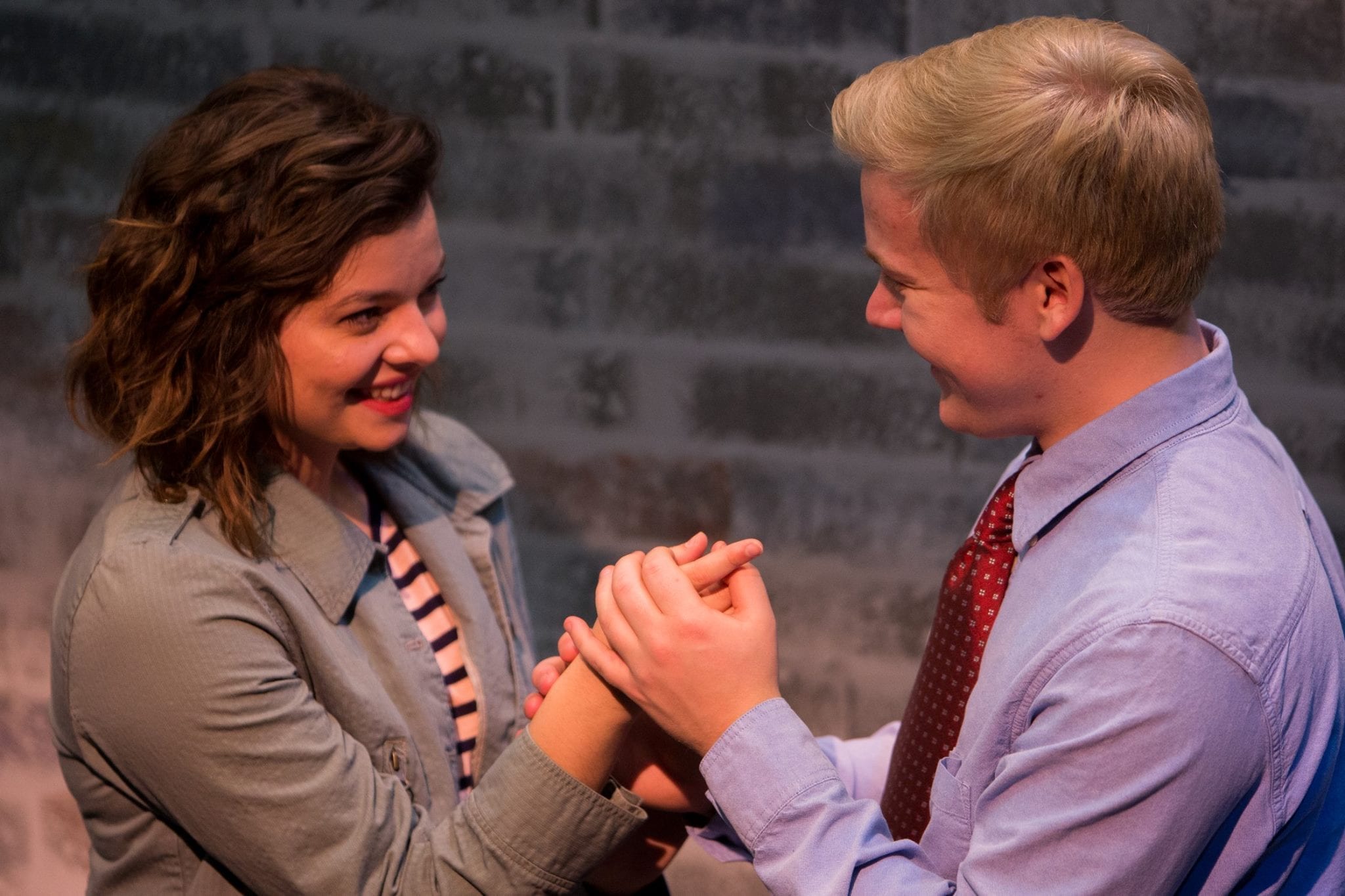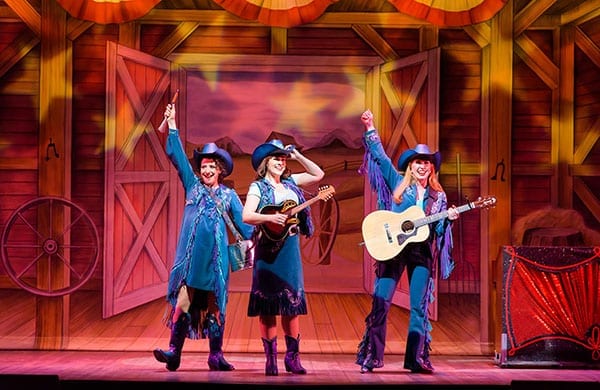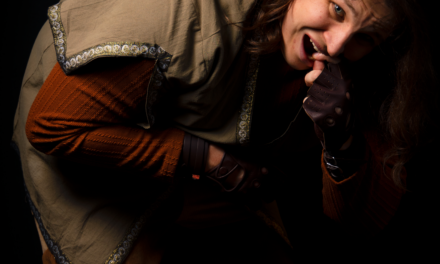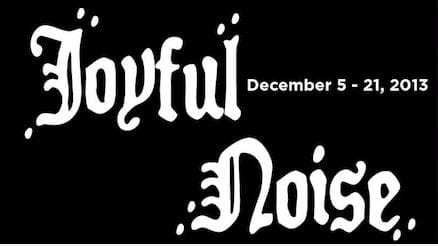SALT LAKE CITY — Despite being riddled with problems, the Westminster College production of Children of a Lesser God is moving on a visceral plane. Haunting cello music invites the audience into the silent noise of Sarah Norman’s experience as a deaf member of society. Language expressed by hands, in space, manifests at once the beauty of language, and also its complexities and limitations.
On the outer surface, playwright Mark Medoff’s writing deals with language, communication, and the marginalization of the deaf community. As a former student of the school, Sarah and her teacher (named James Leeds), battle over their relationship in almost animalistic style: James tries to get inside Sarah’s head, to understand her, and almost own her. Yet, as this production moves and matures, the subject in this story is relationships and the space within and around them.
Underpinning this all-encompassing relationship is the tension of political action against the treatment of the deaf and hearing-impaired community. Orin Dennis is avid in his revolution against his treatment, and as a speaking, hearing-impaired protestor, he needs Sarah to represent the deaf. Yet Sarah fights back, wanting to explore her own identity without being attached to labels and used as a platform.
Sitting in the black box theatre so close to the actors, I could feel the sheer amount of effort and enthusiasm this cast had, to honestly reflect and portray the deaf community. Max Huftalin, as James Leeds, led the cast through this emotional journey with adept awareness and strength. Huftalin not only had to learn American Sign Language, but was the bridge, the translator, between the hearing and the deaf world. He listened to Sarah’s language, translated her ASL for the audience, and then responded using sign language and his voice. It was all quite a feat.
 At first, Amanda Corbett (as Sarah) proves to be completely closed off from everyone and everything. Corbett’s body language, and particularly the energy behind her sign language, is angry and resistant. Throughout the play Corbett chooses jerky and aggravated interactions with the other actors—at times resulting to pushing them—that makes her seem younger than she is supposed to be. And although Huftalin and Corbett watch and listen closely to each other, there is no weight or familiarity in their relationship after they are married. Yet, the bond between the two is evident, and it is hard to resist their emotional wear and tear, and finally, their surrender.
At first, Amanda Corbett (as Sarah) proves to be completely closed off from everyone and everything. Corbett’s body language, and particularly the energy behind her sign language, is angry and resistant. Throughout the play Corbett chooses jerky and aggravated interactions with the other actors—at times resulting to pushing them—that makes her seem younger than she is supposed to be. And although Huftalin and Corbett watch and listen closely to each other, there is no weight or familiarity in their relationship after they are married. Yet, the bond between the two is evident, and it is hard to resist their emotional wear and tear, and finally, their surrender.
One of the interesting themes of the play is the idea that Sarah has learned to receive love and attention through her body and her sexuality. She imports that while she may not be able to communicate with language, she has always been good at sex. It is even hinted that Sarah’s mother and sister knew about her early sexual escapades and even encouraged them. From all directions of life, Sarah has felt the deep displeasure of little gods all around her. Everyone, and even James, try to get her to be something else and move her from the margins into the centered “norm.” Corbett handles these pressures in admirable style, as she guards her body, and reacts defensively.
Hauftalin explores his frustration within a hearing and non-hearing relationship. His hands hurt, his ears hurt, and most of all his heart hurts. His desperation to make contact with Sarah is palpable as he yells for her to talk. Finally Corbett breaks down, and shouts, wildly, and incoherently into the theatre. After expressing all along that she won’t do things that she can’t do well, she is broken down, and sobs out. This moment pierces the air—and shows once again, that after all, language doesn’t help us communicate.
Director Jared Larkin set the atmosphere of this world through textured lighting, and imposing music. While the space for this production worked wonderfully for the space of language, the rules of the play were unclear and confusing. The production opened by the ensemble placing blocks and set pieces through the use of modern dance movement, all which kind of fizzled out by the second act. I was left wondering why there were so many ensemble members and what their purpose was. Sometimes physical and literal props were used, like the bed sheets, the laundry basket, and the chalk on the board, and other times the actors pantomimed playing cards, eating at a restaurant, and looking at the menu.
The costume changes and choices were disruptive and disjointed. At times members of the ensemble would place two sides of a jacket onto James, and then rip them off again. Sarah seemed to change outfits continually, and it generally seemed to add unnecessary time to the production. Yet, the most problematic aspect of the show was the transitions from one scene to the next. These stops and starts seemed to sort themselves out towards the end of the second act, but ultimately were disruptive throughout. Sometimes the scene changed by moving set pieces, sometimes by complete black outs, and sometimes through lighting; all in all not helping to further or support the story.
I’m not sure what the concept of this show was, but the story itself shone through, and the love and devotion that the actors gave it was touching. Throughout the relationships and political pressures of the piece it is clear that sometimes communication—connection—transcends language.






